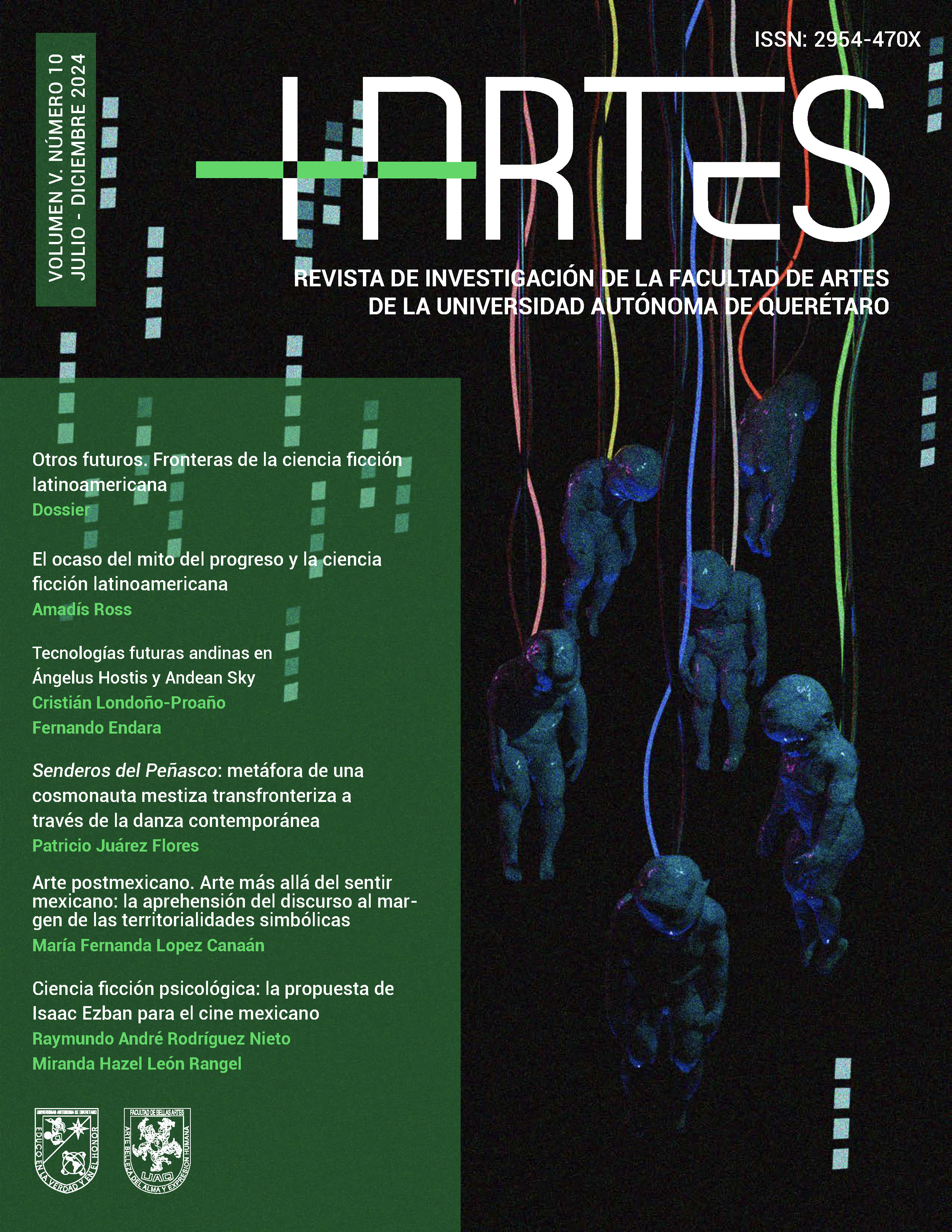Abstract
In recent years, dystopia has become an important object of study in academic circles within the broad spectrum of science fiction. Nonetheless, the majority of studies on audiovisual dystopian production have prioritized the examination of its strictly narrative aspects, disregarding the stylistic and formal elements that structure audiovisual texts. This paper intends to offer a possible approach to dystopian images from a perspective that combines critical and contextual analysis of these audiovisual productions with film analysis, thus providing specific analytical tools related to this field of study. To achieve this, and as an illustration of the possibilities of this approach, we will discuss some of the most relevant 21st-century dystopian films, including Steven Spielberg's Minority Report (2002) and Ready Player One (2018), along with noteworthy works like Alfonso Cuarón's Children of Men (2006) and Denis Villeneuve's Blade Runner 2049 (2017). Drawing upon the conceptualization of filmic text from authors such as Barthes, Kristeva, Metz and Carmona, we intend to analyze the films from two fundamental and complementary angles: one addressing the link between text(s) and context(s), and the other dealing with the possible identifications the films propose in terms of the spectatorial gaze.
References
Aumont, J., Bergala, A., Marie, M. y Vernet, M. (2008). Estética del cine: Espacio fílmico, montaje, narración, lenguaje. Barcelona: Paidós.
Barthes, R. (2003). Variaciones sobre la escritura. Barcelona: Paidós.
Barthes, R. (2004). S/Z. Buenos Aires: Siglo XXI.
Bazin, A. (1990). ¿Qué es el cine? Madrid: Rialp.
Carmona, R. (2010). Cómo se comenta un texto fílmico. Madrid: Cátedra.
Cuarón, A. (Director). (2006). Children of Men [Película]. Universal Pictures; Strike Entertainment; Hit & Run Productions; Toho-Towa.
Gómez Tarín, F. J. (2000). “El espectador frente a la pantalla: Percepción, identificación y mirada”. BOCC: Biblioteca On-Line de Ciências da Comunicação, pp. 1-22. Recuperado de http://apolo.uji.es/fjgt/percep.PDF
Kristeva, J. (1981). Semiótica 1. Madrid: Fundamentos.
Rey Segovia, A. C. (2021). ¿No hay alternativa? Aperturas utópicas y clausuras distópicas: una mirada al futuro a través del cine de masas del siglo XXI [Tesis doctoral inédita]. Universitat de València, España.
Scott, R. (Director). (1982). Blade Runner [Película]. The Ladd Company y Shaw Brothers.
Spielberg, S. (Director). (2002). Minority Report [Película]. Amblin Entertainment; Cruise/Wagner Productions.
Spielberg, S. (Director). (2018). Ready Player One [Película]. Warner Bros. Pictures; Amblin Partners; Village Roadshow Pictures; De Line Pictures.
Talens, J. (2010). El ojo tachado. Madrid: Cátedra.
Villeneuve, D. (Director). (2017). Blade Runner 2049 [Película]. Alcon Entertainment; Columbia Pictures; Bud Yorkin Productions; Torridon Films.

This work is licensed under a Creative Commons Attribution-NonCommercial-ShareAlike 4.0 International License.
Copyright (c) 2024 HArtes


